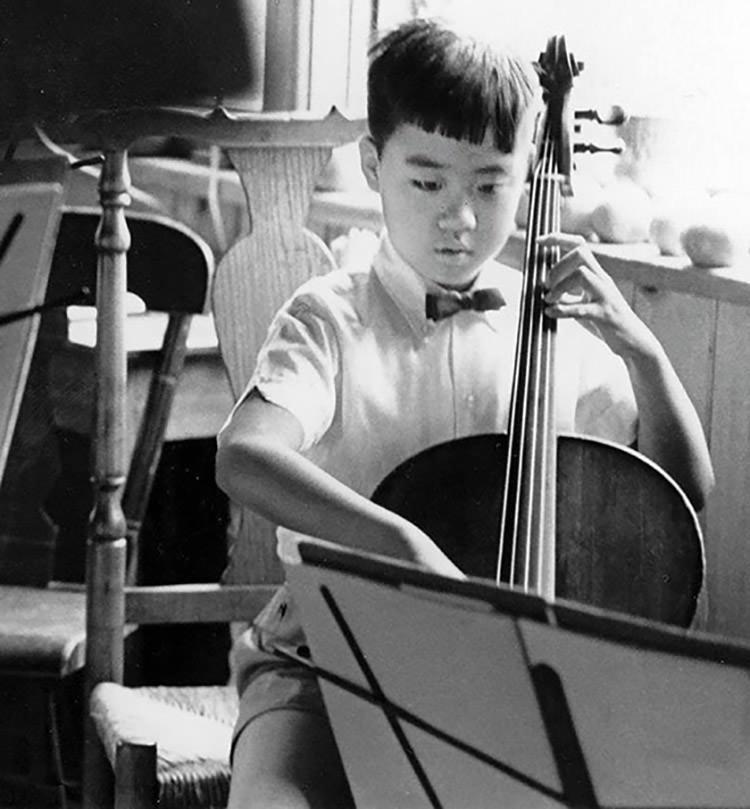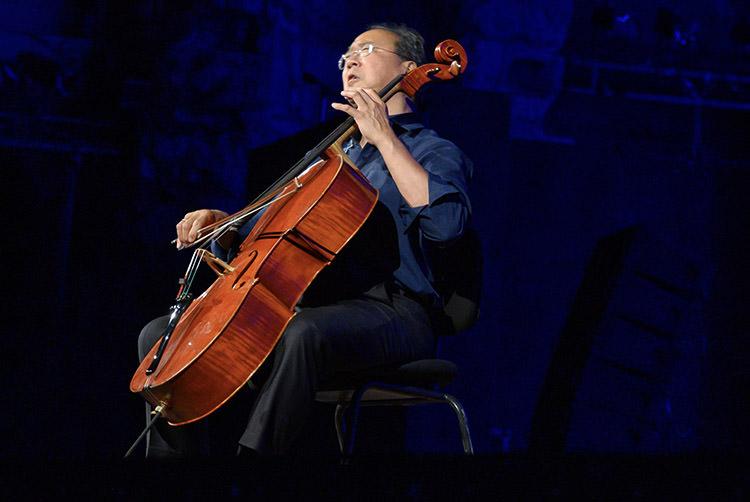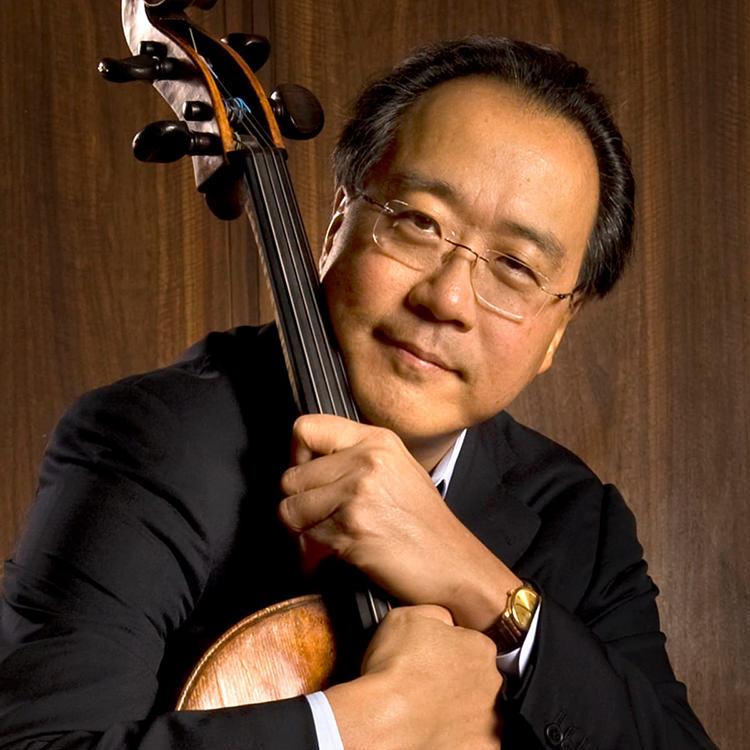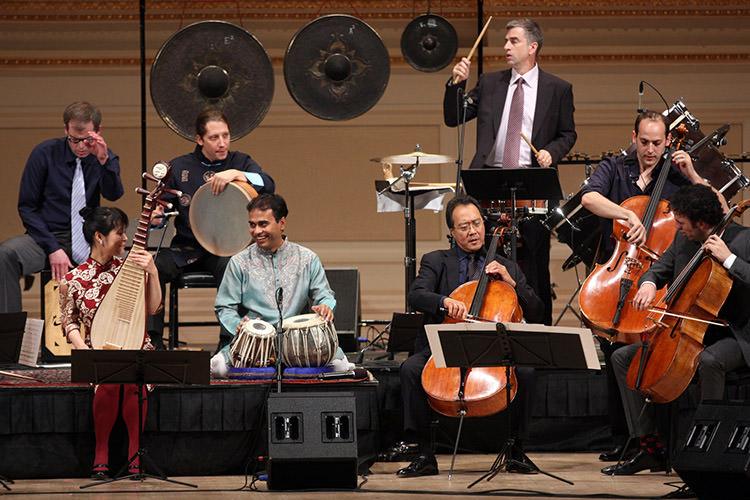Yo-Yo Ma, A legendary Cello Player
Few cellists enjoy such widespread renown and appreciation as Yo-Yo Ma. Possibly one of the most instantly recognizable names in contemporary classical music, Ma is a fascinating figure that attracts new listeners and fans every year. At the respectable age of 67, Yo-Yo Ma has built an impressive reputation for himself, and will go down as one of the most talented musicians of our time.
But where did this true-born artist get his beginnings? While most of us recognize the name (and often the instrument it’s associated with), few can go further than that. And now’s your chance to rectify this.
The Early Years
Born on October 7th 1955 to Chinese parents in Paris, France (both having relocated during the Chinese Civil War), Yo-Yo Ma enjoyed a diverse cultural background which could only serve to enrich his own attitude towards music and international performance.
Described by some as a “born musician”, Ma was born to artist parents. His father, Hiao-Tsiun Ma, was a composer, accomplished violinist and a music professor at Nanjing National Central University (in present-day Taiwan), while his mother, Marina Lu, was a singer.
Hiao-Tsiun Ma was determined to give his children a rich musical education, and began teaching Ma at the tender age of three. Experimenting at first with the viola and the violin, following no doubt in the footsteps of his father, Ma eventually settled on the cello, at age four.

Hiao-Tsung Ma was a rigorous teacher, with high expectations for his children. He would often wake Yo-Yo Ma and his sister, Yeou-Cheng Ma, in the middle of the night, to practice music, and give lessons. Yeou-Cheng Ma, the cellist’s older sister, was a prolific violin and piano player in her own right, though would eventually give up a professional career, and pursue pediatrics, instead. While Hiao-Tsung Ma handled much of his son’s early musical education, he eventually conceded that the boy required a more skilled teacher, and signed Ma up for lessons with the renowned Mme Michelle Lepinte.
From there on, Ma’s parents would pursue better and better education for their prodigy. In the early 1960s, when Yo-Yo Ma was only seven years old, the Ma family emigrated to the United States, settling in New York City. Here, the young cellist was enrolled into the Juilliard School, one of the most prestigious performative arts centers in the world. Here, he would study under renowned cellist Leonard Rose.
It was also at age 7 that Ma became known to the American public, alongside his sister, playing the first movement of the Concertino No. 3 in A Major by Jean-Baptiste Breval, for President John F. Kennedy and President Dwight D. Eisenhower. In the years that followed, he would appear on television, alongside Leonard Bernstein, and on The Tonight Show With Johnny Carson.
Ma made his Carnegie Hall debut at age nine, and was recommended everywhere as a phenomenal prodigy. Later, in his adolescence, Yo-Yo Ma would long to experience life as a “normal student”, rather than a musical prodigy, and eventually dropped out of Juilliard. In spite of the pressure from his parents to attend a traditional conservatory, Ma enrolled into Harvard University, which he would leave with a degree in humanities. Later, he would also attend Columbia University.

Classical Career
To try to summarize Ma’s impressive career in any one sentence would be laughable. Having spanned more than six decades now (and still ongoing), his work as a cellist has brought forth a tremendous body of work. And since Ma has experimented and shown a keen eye for several music genres, not just classical, we thought it best to discuss each separately.
As a grown-up, Yo-Yo Ma would build a reputation in chamber music. He frequently performed alongside renowned pianist Emanuel “Manny” Ax. Having first met as students at Juilliard (where Ax now teaches), the two have maintained a close friendship over the decades. As musicians, they have enjoyed frequent collaborations, as part of a trio with violinist Young-Uck Kim. The two have also worked as part of a quartet alongside violinists Jaime Laredo, and Isaac Stern.
Throughout his classical career, Ma would continue to return to his childhood influence, German composer Ludwig Van Beethoven. In his adult career, Ma periodically re-recorded much of Beethoven’s work. He collaborated with Ax both on Beethoven’s sonatas in 1985, and later, on the sonatas of Johannes Brahms, in 1991.
As a solo artist, Ma’s repertoire was also heavily influenced by Johann Sebastian Bach. In childhood, he would apply himself to Bach’s tremendously complex six suites for unaccompanied cello. Learning these would prove one of the highest achievements of Ma’s early career. As an adult, he re-recorded the suites for unaccompanied cello in 1983, and then again in 1998. In fact, his ‘98 recording of the suites serves as the perfect statement to Ma’s multi-faceted and inter-disciplinary career. For the 1998 recording of the suites, Yo-Yo Ma partnered up with artists from a variety of disciplines, like choreography, theater, directing, and so on, to create accompanying short films. Thus lending a visual aspect to his music, Ma transcended the border of his discipline, creating a resounding body of work that would remain in public memory. By blending multiple disciplines, and adding a visual layer to his music, it can be argued that Ma worked to make classical music, such as that of Bach, more accessible to the large public.
Bach’s six suites continued to fascinate the cellist. Most recently, he re-recorded the entire suites in 2018, which then launched a worldwide tour, of Ma performing them.

Other Disciplines
If Yo-Yo Ma had simply been a wonderful and prodigious cellist, that would’ve been enough to cement his reputation in the history of music. However, Yo-Yo Ma has long established himself as so much more than just a man who plays Bach extraordinarily.
But he is more than that. Throughout his long career, Ma has dedicated himself to exploring the ways in which music can rekindle human connection. As with his 1998 Bach recordings, he frequently tries to merge multiple disciplines to create a more vivid and unusual artistic offering.
As a musician, he has also worked on bluegrass recordings, enlisting professional bluegrass musicians, on Appalachian Waltz in 1996 and Appalachian Journey in 2000. Ma has teamed up with multi-genre artist Bobby McFerrin on the album Hush, and with legendary guitarist Carlos Santana, on Guitar Heaven: The Greatest Guitar Classics of All Time. He has recorded tangos, and provided soundtracks for numerous films, including Naqoyqatsi and Crouching Tiger.
Ma has worked with everyone from score composer and minimalist Philip Glass to pop icon Miley Cyrus.

Silkroad Ensemble
Ma’s most famous enterprise, outside of his classical music, is the founding of the non-profit organization Silk Road Ensemble. Taking its name from the eponymous cross-continent route, and established in 1998, Silkroad’s main purpose is to bring together artists and audiences from different disciplines and different countries.
The goal of Silkroad is to “explore the ebb and flow of ideas”, and provide a space for artists to transcend geographical and political borders, exploring what truly unites them – music.
At only 67, Yo-Yo Ma has already accomplished the sum of several careers, and will be remembered as not only a refined cellist, but a phenomenal human being and well-rounded artist. And at what is still a young age, he stands to add so much more to our international artistic heritage.
What better way to finish this study into the compelling life of Yo-Yo Ma than by listening to some of his most notable works? Radio Art provides a dedicated Yo-Yo Ma channel, allowing you to explore various renditions and key moments of Ma’s tremendous body of work.
Our website respects the intellectual property rights of creators, as well as the music rights of authors and composers.
The musical works are provided solely for the private use of each visitor/user
and any further exploitation of them in any way is prohibited without prior permission from AUTODIA and EDEM Rights.
Radio Art is fully approved by the Greek Collective Rights Organizations | AUTODIA | EDEM Rights
Copyright © RABS - Radio Art Broadcasting services Ltd. All rights reserved.
The Art of Relaxing & Meditation Music
Privacy Policy & TOS








